Departure Date: April 17 - 27, 2025
Compiled By: Brad McKinney and David Irons
Trip Leaders: Brad McKinney
Toll Free: 800.328.8368
Phone: 512.328.5221
Big Bend National Park & the Texas Hill Country 4/17/2025-4/27/2025

Spring is a wonderful time to visit the Texas Hill Country and Big Bend National Park. During this season, one can enjoy stunning vistas, witness the spectacle of migration, and revel in the amazing Texas wildlife from wildflowers, butterflies, reptiles, mammals, and of course birds. The latter half of April is a time when Black-capped Vireos and Golden-cheeked Warblers are generally conspicuous in the oak-juniper woodlands of central Texas, and Colima Warblers are arriving in the Chisos Mountains of Big Bend NP. With a favorable weather forecast ahead of us, we had high hopes as we left San Antonio for the famed Hill Country near Concan, Texas.
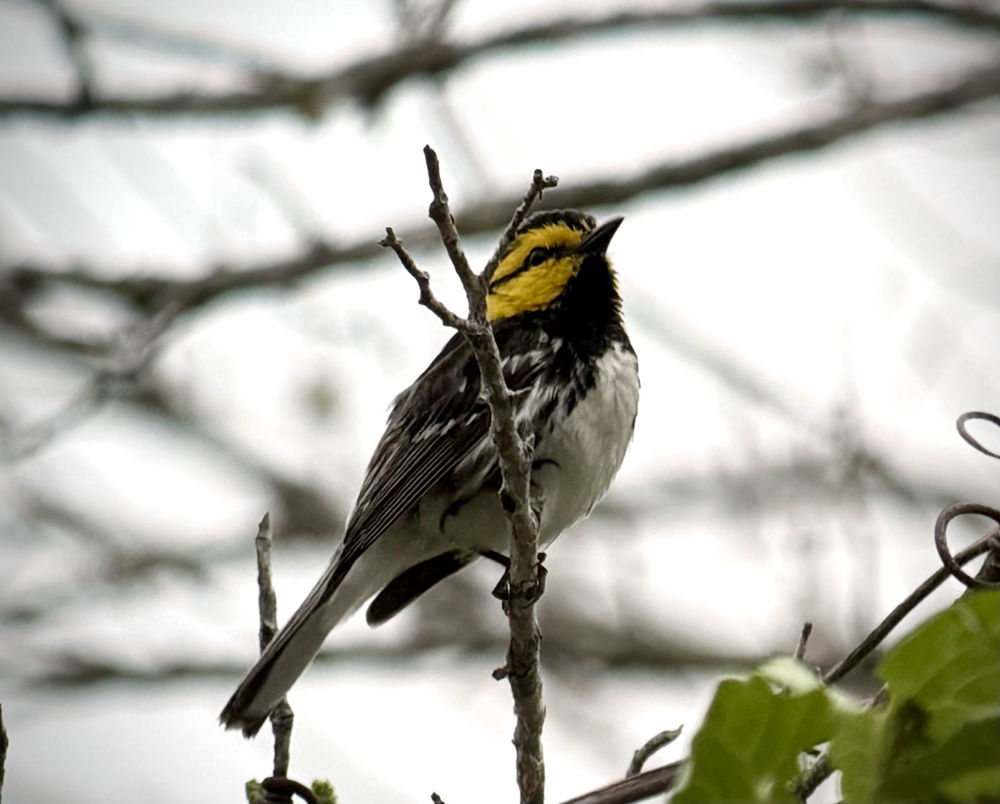
Golden-cheeked Warbler near Vanderpool, TX © Brad McKinney
Our first birding stops were at Medina County Rest Area and Uvalde Fish Hatchery, picking up birds we would not see elsewhere. Scores of Scissor-tailed Flycatchers and Western Kingbirds dotted fence lines and utility wires as we rolled along across the northwestern margin of the coastal plain. Displaying male Vermilion Flycatchers graced every stop. The most cooperative Olive Sparrow either leader had ever experienced, great looks at two spectacular Green Jays, and adult male Indigo and Painted buntings feeding side by side in a patch of grass highlighted the fish hatchery stop.
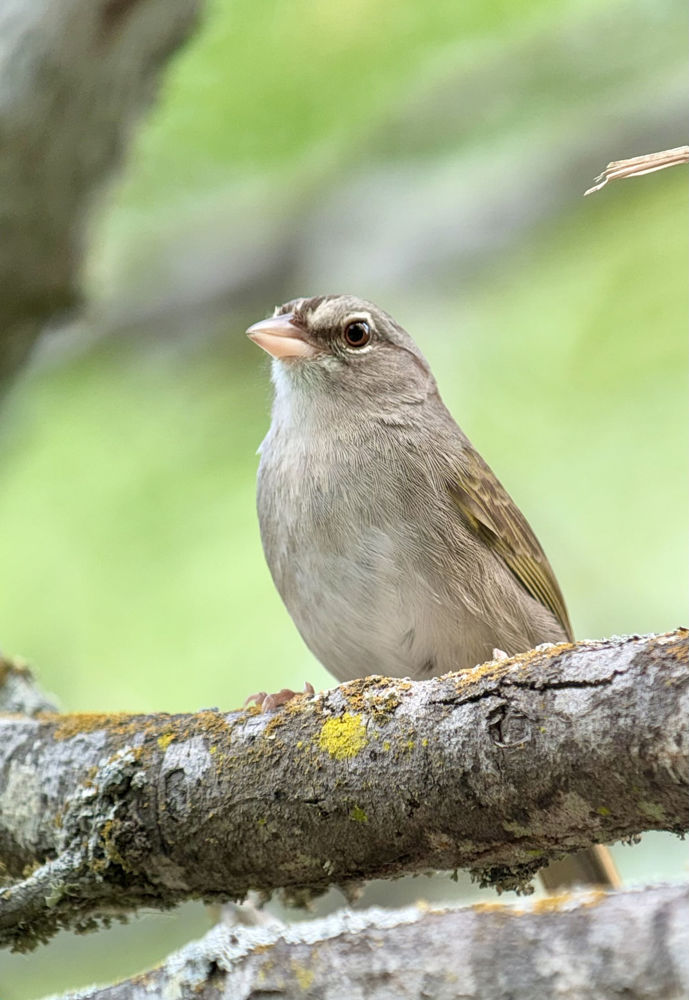
Olive Sparrow at the Uvalde Fish Hatchery © Brad McKinney
After lunch, we checked in to our cabins at Neal’s Lodges in Concan, our Hill Country base for the next two nights. After an early dinner we headed out to the world-famous Frio Bat Cave, where upwards of 15 million Mexican Free-tailed Bats roost and raise young during the spring and summer. Standing at the mouth of the cave as the bats pour out during the evening fly-out defies description. Bats often passed within a few inches of our heads, so close you could feel the rush of air. Once it was too dark to see, we made stops on the way out to hear Common Poorwills, then returned to Neal’s where Chuck-will’s-widows would serenade us, capping off an incredible first day in the Texas Hill Country.
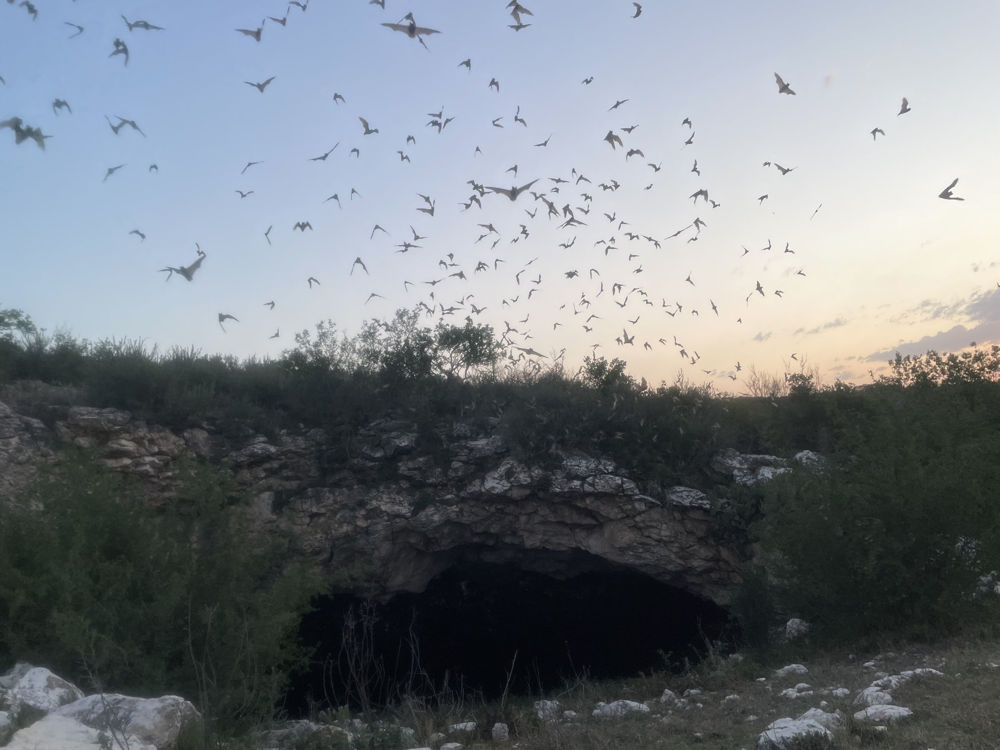
Mexican Free-tailed Bats emerging from the Frio Bat Cave © Brad McKinney
Two iconic Edwards Plateau species, Golden-cheeked Warbler and Black-capped Vireo, would be our main targets this morning. Golden-cheeked Warbler is an endangered species that breeds nowhere else on earth but in the ashe-juniper and oak woodlands of the Texas Hill Country. On our first two stops, we had excellent views of male Golden-cheeked Warblers singing from a variety of open perches. What a great start! At our third stop, attention quickly shifted from Golden-cheeked Warblers to a singing Black-capped Vireo nearby. The vireo can be a challenging bird to see well, and this bird lived up to its skulking nature. By late morning, however, we had seen several more Black-capped Vireos at Brushy Creek Ranch, with everyone getting good looks. Flocks of sparrows, mostly Chipping, Lark, and Vesper, greeted us at every turn, and they were abundant along the road through Brushy Creek Ranch. That afternoon we went down along the Frio River to look for Tropical Parula, another very localized Hill Country breeder that favors stands of mature Montezuma Bald Cypress. One cooperative male seemed bent on being the most photographed bird of the tour! With the soothing sounds of Leopard and Blanchard’s cricket-frogs nearby, our night walk that evening produced fantastic looks at a “McCall’s” Eastern Screech-Owl and several calling Chuck-will’s-widows.
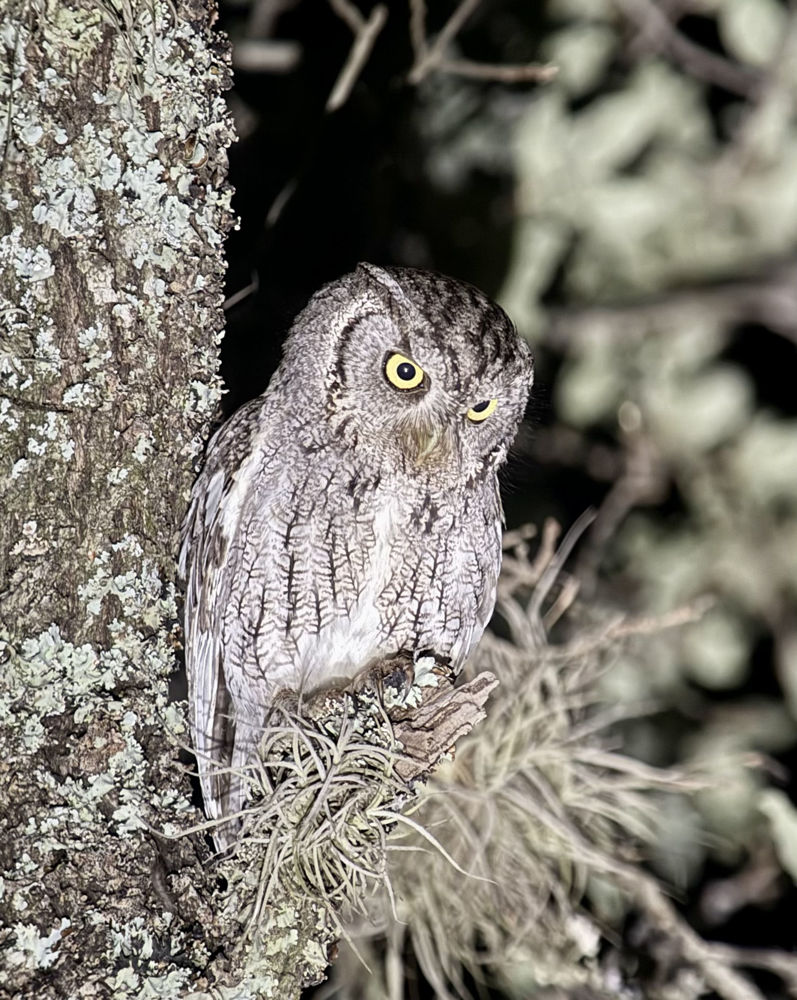
"McCall's" Eastern Screech-Owl at Neal's Lodges © Brad McKinney
An overnight thunderstorm deposited a few new migrants at Neal’s Lodges, and we had a nice hour-long walk that included another good look at Black-capped Vireo before departing the Hill Country. The remainder of the morning was spent making frequent stops along highway brush lines where we had great looks at Cassin’s, Grasshopper, Chipping, Lark, Vesper, and Savannah sparrows and Lark Bunting. One of the morning highlights was the incredible views of a Cassin’s Sparrow skylarking no more than 30 yards off the road!
By that evening we had reached Del Rio, where we would stay the night and bird the following morning. Our morning bird walk at San Felipe Creek produced a nice mix of warblers, orioles, and other migrants, plus our only Couch’s Kingbirds of the trip. Just as we were heading back to the van, our group was stunned by a spectacular encounter with a Ringed Kingfisher along San Felipe Creek. It flew in without making a sound and left the same way but in between perched for a couple of minutes in perfect lighting at close range. What a sight! From there we made our way down towards the Rio Grande with stops at a large wetland pond that bolstered our list of waterbirds and then on to Vega Verde Road, where we had our first and only Varied Bunting and great looks at our second male Hooded Oriole. After lunch in Del Rio, we drove out to Big Bend National Park, enjoying the ever-changing geologic formations on our way to the Holiday Hotel in Terlingua.
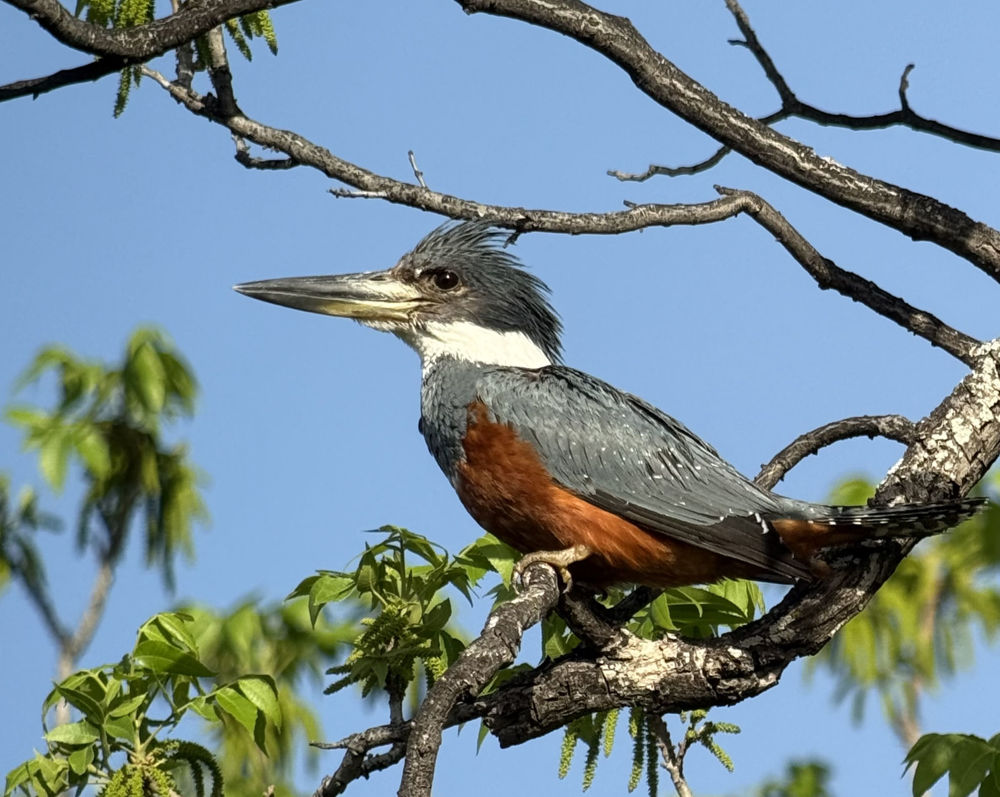
Ringed Kingfisher along San Felipe Creek, Del Rio © Brad McKinney
On our first morning at Big Bend NP, we enjoyed a leisurely hike down the Window Trail and birded around the Chisos Basin Campground. As we began our hike, a few of us got quick views of an unexpected Hermit Warbler, a bird rarely seen on this tour. Bird highlights included great studies of Dusky Flycatcher, close encounters with ever-curious and beautiful Mexican Jays, and nice scope views of a Crissal Thrasher, always a tough bird to find on this tour. After a short afternoon bird walk at Cottonwood Campground, we continued on to the scenic Santa Elena Canyon Overlook, where we had great looks at our only Zone-tailed Hawk of the trip just before reaching the overlook. Then, as we gazed awestruck at the massive 3,000’ tall cliff faces that bracket the canyon, a Western Screech-Owl began calling down the slope. A nice way to finish our first full day in the Big Bend.
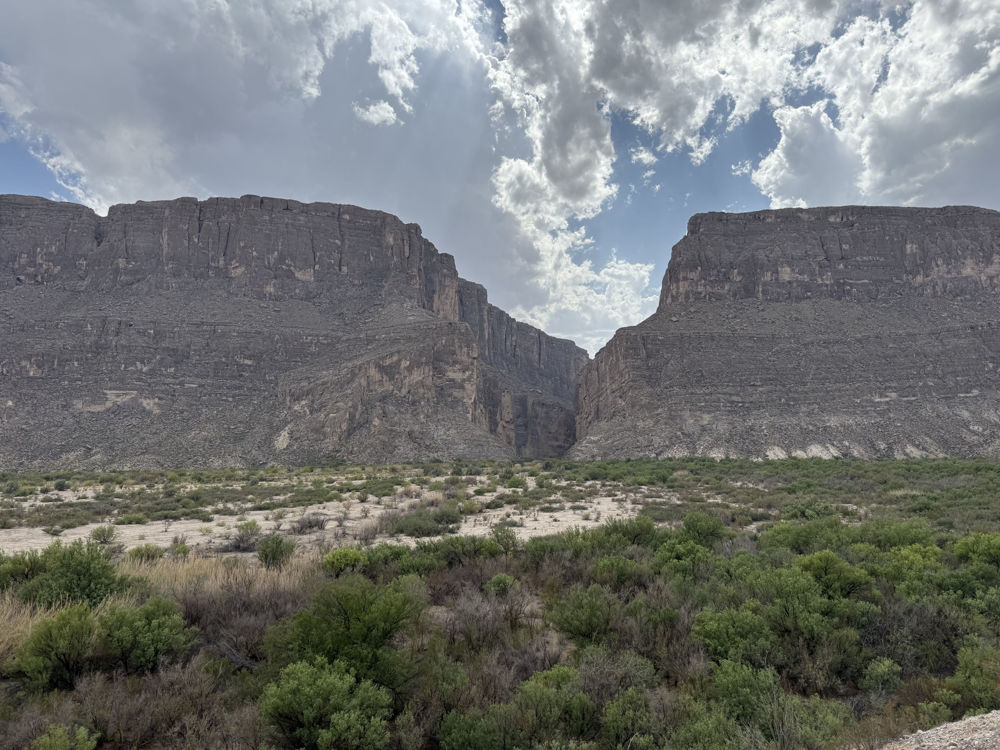
Santa Elena Canyon lookout © Brad McKinney
Our second morning at Big Bend NP would also be our most challenging. Hiking the Pinnacles Trail to Boot Springs to see the Colima Warbler, unquestionably the most sought-after bird of the tour, involves a ten-mile round trip up towards Emory Peak at an elevation of about 7,500’. Our group was up for the challenge. Benefitting from cooler than normal temperatures, we saw several birds along the way, including Hammond’s Flycatcher, Hutton’s Vireo, Townsend’s Solitaire, Dark-eyed Junco, and Black-headed Grosbeak. Although we heard several Colima Warblers singing in the distance around Boot Springs, we had no luck in finding any, so we broke for lunch. A half-grown bear cub foraging on the far side of a ravine entertained us during our picnic. As we started on our way back, we heard a Colima Warbler singing close to the trail. A small bird appeared near the top of a nearby oak—a Colima Warbler at last! We all got good looks as the bird flew across the trail and worked low in the trees before leaving the area. What an amazing bird! Having our entire group share in this successful hike to Boot Springs will long be remembered by all of us! Our return to the parking lot was celebrated with ice-cold drinks and then dinner at the Chisos Lodge Restaurant before driving back to Terlingua.
We spent our last morning in Big Bend at Rio Grande Village. We heard one of the local-nesting Common Black Hawks, but the birds remained hidden. The lawn there was carpeted with sparrows, and the brush line on the opposite side yielded our second Crissal Thrasher and our first Green-tailed Towhees. Our group got excellent studies of a pair of nesting Gray Hawks soaring low above the cottonwoods. After a delicious lunch back at the Chisos Lodge, we birded the Chisos campground where we got scope views of Acorn Woodpecker, Cactus Wren, and Scott’s Oriole before our second attempt to see the often elusive Black-chinned Sparrow. We were successful this time with everyone getting great looks at both Black-chinned and Black-throated sparrows. What a treat! We then enjoyed a wonderful visit and hike into Blue Creek Canyon, where our group was immediately enamored with several colorful and intricately-patterned Greater Earless Lizards. Although we were unable to find a Gray Vireo in the dry creek wash, we found several nice warblers, including Virginia’s (3), Yellow, Chestnut-sided, Yellow-rumped, and Wilson’s. The male Chestnut-sided Warbler was the most unexpected bird of the trip, with just nine prior eBird records of this species for Brewster County. Great spot Val!
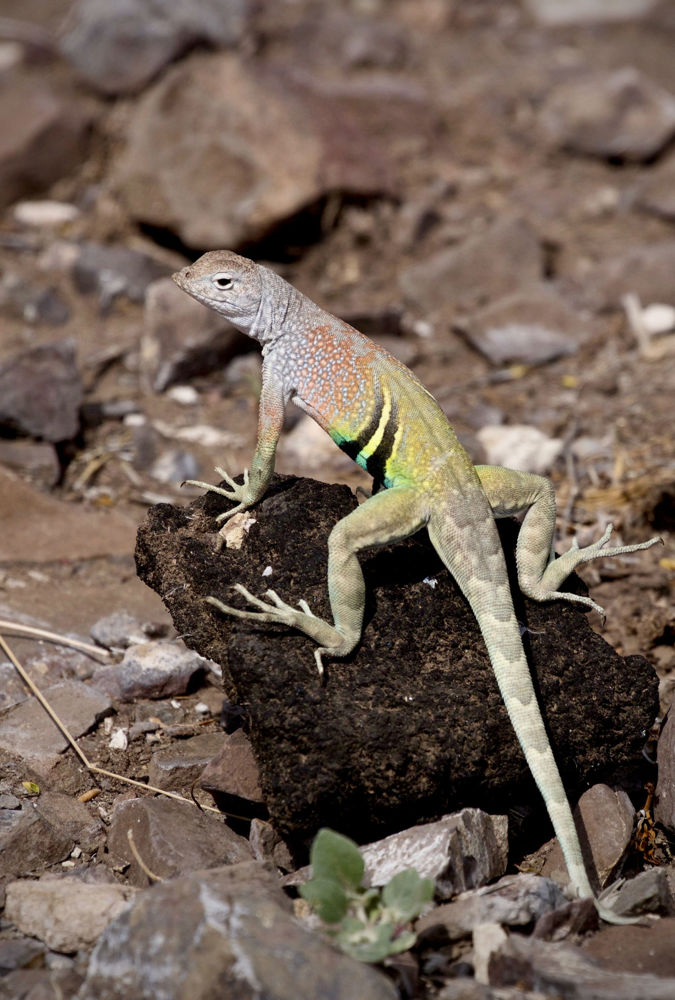
Greater Earless Lizard at Blue Creek Canyon, Big Bend NP © Brad McKinney
The penultimate day of the tour started with a short drive north from Terlingua to the Christmas Mountains Oasis, a private preserve created and managed by Carol Ohl. Multiple small ponds, a water drip, and an expansive seed and hummingbird feeder setup are magnets for both resident and migrant birds. Here at the oasis, we had amazing looks at our main target, the beautiful Lucifer Hummingbird. We also had great views of Scaled Quail, Gray Flycatcher, many sparrows, Green-tailed Towhee, and three male Scott’s Orioles. It was an incredible morning for sure!
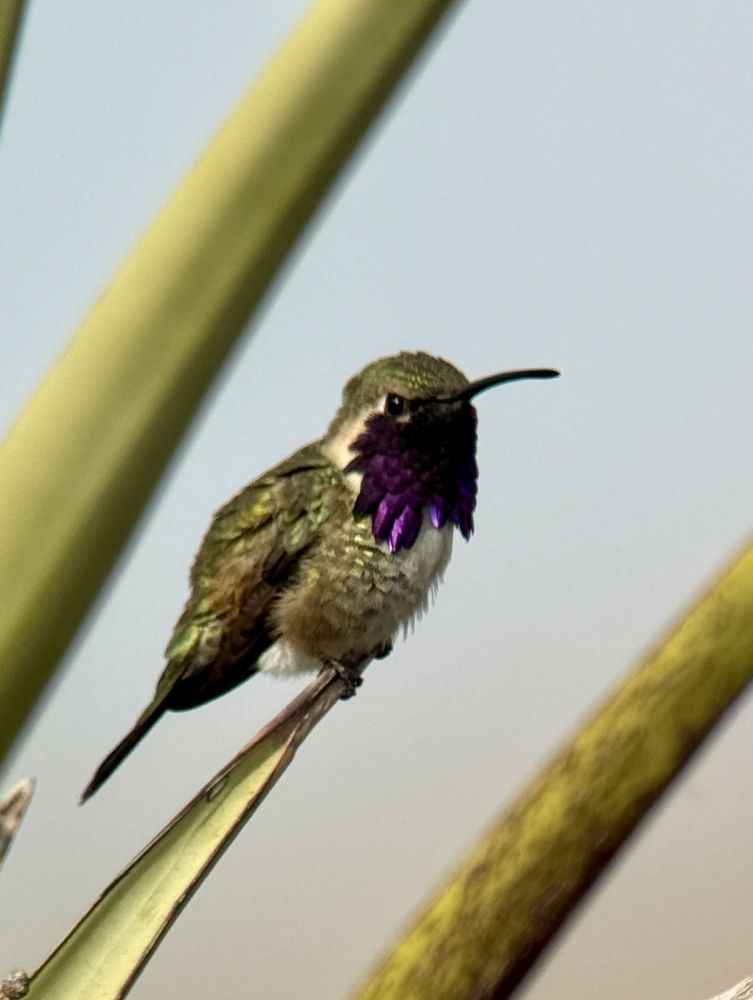
Lucifer Hummingbird on territory at Christmas Mountains Oasis © Brad McKinney
Our next stop was historic Fort Davis and the Davis Mountains, with a new suite of birds in this high elevation Chihuahuan Desert. We added a pair of Common Black Hawks on the drive near Alpine (great spot Dave!) and several Cassin’s Kingbirds near Fort Davis. Following an early dinner, we drove out to McDonald Observatory in hopes of finding the beautiful and enigmatic Montezuma Quail. Although the quail were absent, we added Violet-green Swallow, White-breasted Nuthatch (Rocky Mountain race), and Townsend’s and Hermit warblers. The following morning we birded the Davis Mountains Preserve, a magnificent 33,000-acre Nature Conservancy property 25 miles northwest of Fort Davis. On the drive to the preserve from Fort Davis, we had close up views of a small herd of free-ranging elk, the result of a re-introduction program from the 1920s. As we checked in at the McIvor Visitor Center, we were surprised to find a male Rose-breasted Grosbeak, rare this far west in Texas, and also had great looks at Plumbeous Vireo. Further down the Madera Canyon Trail, we had wonderful scope views of Hepatic Tanager and Black-headed Grosbeak, and heard multiple singing Grace’s Warblers, but they never appeared. On the drive back to the entrance gate Barb spotted an Olive-sided Flycatcher perched low right next to the road. Not long after leaving the preserve, we had our best looks yet at Chihuahuan Meadowlark, capping off a delightful morning in the Davis Mountains.
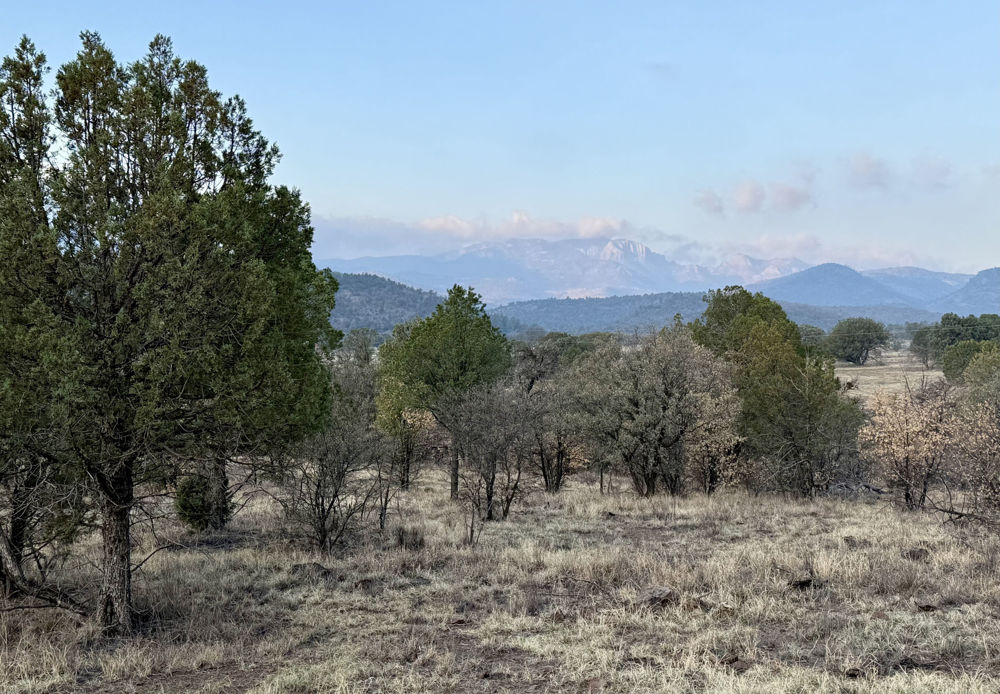
A view of the unique sky island from the Davis Mountains Preserve © Brad McKinney
During our tour, we tallied 185 bird species in addition to many interesting mammals, reptiles, butterflies, and plants. It was a blast leading this tour with Dave Irons, and what an awesome group of participants we had on this tour! We want to thank you for joining us on our Big Bend and Texas Hill Country adventure. We hope that you have learned a lot about Texas and its wildlife, while at the same time having lots of fun. We look forward to seeing you on another tour in the near future!
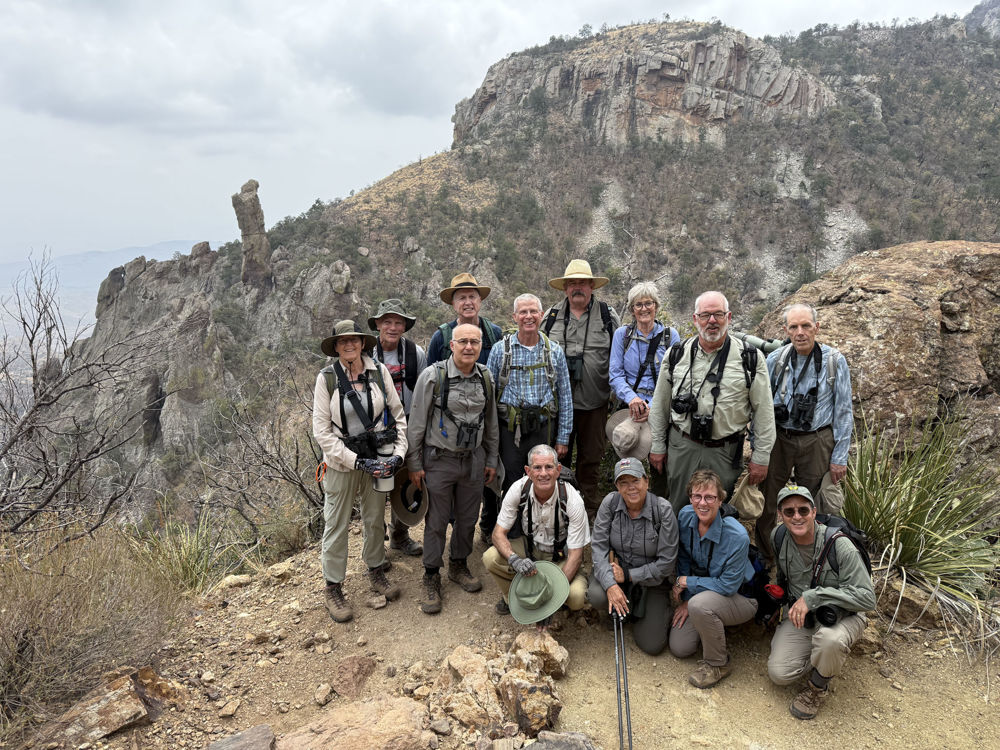
All smiles at Boot Springs after seeing Colima Warbler! © Brad McKinney
Please note that the Chisos Lodge area is slated to close for a major two-year renovation project beginning on July 1, 2025, restricting access to trails leading from the Chisos Basin for the next two years. During this time, VENT will be postponing its Big Bend and Texas Hill Country tours in 2026 and 2027, in its place offering tours to the famous Cibolo Creek Ranch and Davis Mountains Preserve. Next year’s dates for the Cibolo Creek Ranch and Davis Mountains Preserve tour will be April 24-May 1, 2026. These dates follow VENT’s 50th Anniversary Celebration in Beaumont, Texas, April 19-24, 2026 allowing participants attending the 50th Anniversary Celebration the opportunity to also experience the best in West Texas birding!
A complete list of the birds recorded on our trip can be found at:
https://ebird.org/tripreport/349801
View Brad McKinney's upcoming tour schedule.
ITINERARY
April 17 – arrival in San Antonio.
April 18 – drive to Uvalde, Hwy 90 Medina County Rest Area, Uvalde Fish Hatchery, Neal’s Lodge, County Road 127, Frio Bat Cave.
April 19 – Highway 83, Ranch Road 337, Brushy Creek Ranch, Ranch Road 187, afternoon walk along Rio Frio at Neal’s Lodges.
April 20 – grounds of Neal’s Lodge, County Road 127, Ranch Road 2690, Texas Hwy 55, County Road 334, drive to Del Rio.
April 21 – birding in Del Rio along Magnolia and Barron streets, San Felipe Creek Walk, Duck Pond, and Las Cienegas and Vega Verde roads, drive to Big Bend National Park with roadside birding on Hwy 90 and a stop at Pecos River overlook.
April 22 – The Window Trail, Cottonwood Campground, Santa Elena Canyon lookout.
April 23 – all day hike to Boot Springs via Pinnacles Trail (10-miles round trip).
April 24 – Rio Grande Village, Chisos campground, the “secret spot"; afternoon at Blue Creek Canyon.
April 25 – Christmas Mountain Oasis (Carolyn Ohl Ranch), drive to Fort Davis with roadside birding, Hwy 118 and road to McDonald Observatory in late afternoon.
April 26 – Highway 118, Davis Mountains Preserve and I-10 to San Antonio.
April 27 – departures for home.

